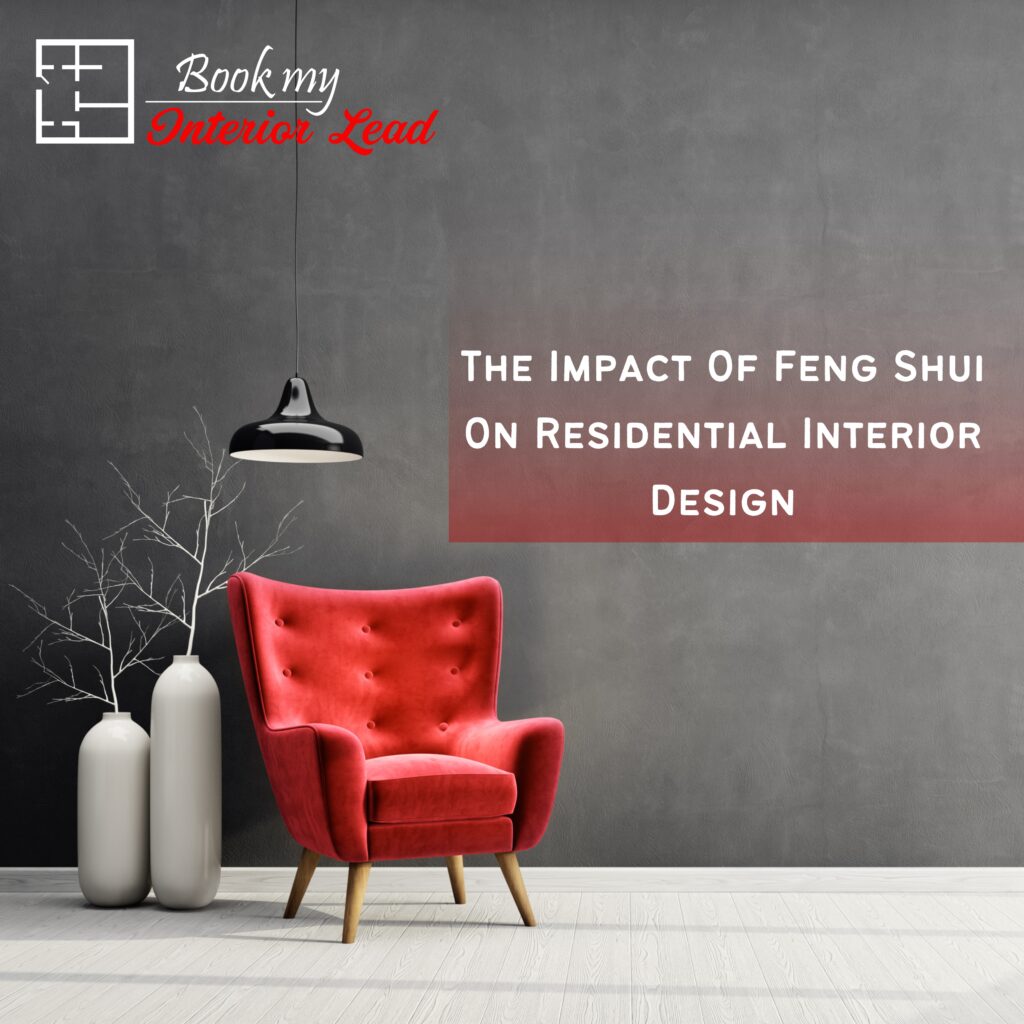Introduction:
Feng Shui, an ancient Chinese practice rooted in the art of placement and energy flow, has been influencing residential interior design for centuries. The philosophy behind Feng Shui emphasizes harmony, balance, and positive energy within living spaces. In this blog, we’ll explore the profound impact of Feng Shui on residential interior design and how it can enhance your home’s atmosphere.
1. The Fundamental Principles of Feng Shui:
Feng Shui, a fundamental concept in interior design, encompasses several core principles that guide the creation of harmonious living spaces. These principles include the balance of the five elements (wood, fire, earth, metal, and water) to promote positive energy flow, the importance of clear pathways and clutter-free environments to facilitate the circulation of Qi (life force energy), and the thoughtful placement of furniture and decor to enhance the well-being and prosperity of occupants. By embracing these fundamental principles of Feng Shui, interior designers can transform spaces into tranquil, inviting, and energetically balanced sanctuaries, promoting not only aesthetic appeal but also holistic well-being.
2. Arrangement and Placement:
Arrangement and placement are crucial aspects of interior design, where artistry meets functionality. Interior designers meticulously plan and organize furniture, decor, and elements within a space to create a harmonious and aesthetically pleasing environment. Whether it’s selecting the perfect placement for a sofa to maximize seating or arranging artwork to enhance visual balance, interior designers excel at transforming spaces into works of art that not only look stunning but also feel comfortable and inviting. In the world of interior design, arrangement and placement are the brushstrokes that bring a room to life.
3. Colour Choices:
In the world of interior design, colour choices are the artistic brushstrokes that bring life and personality to a space. A skilled interior designer understands that the colours they select can evoke moods, create harmony, and reflect the unique style and preferences of their clients. Whether it’s a serene pastel palette for a peaceful bedroom retreat or bold, vibrant hues for an energetic living room, the art of colour selection is a transformative tool that turns houses into homes. Join us on a journey through the mesmerizing spectrum of interior design as we explore the power of colour and the inspiration it can bring to your living spaces.
4. Lighting and Ventilation:
Lighting and ventilation are vital elements in the arsenal of any interior designer. They serve as the unsung heroes of a well-designed space, setting the mood and ensuring comfort. Properly illuminated spaces can transform the ambiance, highlighting architectural features and creating a warm, inviting atmosphere. Adequate ventilation not only enhances air quality but also plays a significant role in maintaining the well-being of occupants. Interior designers understand that these essential aspects are the foundation upon which the rest of their creative vision is built, making them key considerations in any design project.
5. Incorporating Natural Elements:
Incorporating natural elements into interior design is a transformative approach that celebrates the beauty of the outdoors within your living spaces. Whether it’s the warmth of wooden furnishings, the serenity of stone accents, or the vibrancy of plant life, interior designers skilfully weave these elements into their creations. The result? A harmonious blend of aesthetics and functionality that not only connects you with nature but also enhances the overall ambiance of your home. Discover how interior designers expertly merge the organic with the curated to bring a touch of the great outdoors into your everyday life.
6. Art and Decor:
Art and decor play a pivotal role in the world of interior design, as they are the creative expressions that breathe life into spaces. Interior designers harness their expertise to curate a harmonious blend of colours, textures, and styles, transforming ordinary rooms into captivating sanctuaries. From selecting the perfect artwork to choosing statement furniture pieces, an interior designer’s keen eye ensures that every element resonates with the client’s vision and the desired atmosphere. Whether it’s a contemporary urban loft or a cozy countryside retreat, interior designers masterfully weave the art of aesthetics into the fabric of functional spaces, turning dreams into reality.
Conclusion:
The impact of Feng Shui on residential interior design goes beyond aesthetics; it influences the overall energy and harmony of your living space. By applying the principles of Feng Shui, you can create a home that not only looks beautiful but also feels balanced, peaceful, and filled with positive energy. Whether you choose to fully embrace Feng Shui or incorporate its principles into your existing design style, you’ll be on the path to creating a more harmonious and inviting living environment.

